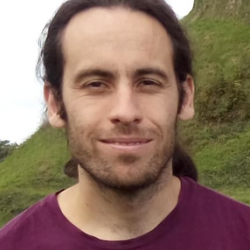Biography
MSc (University of Auckland)
PhD (University of Cambridge)
Research
Algorithms to navigate structure space
Computational structure prediction and data mining approaches are now widely used to predict crystal structure and to reveal a material's underlying properties. These approaches include random sampling, genetic algorithms, simulated annealing (and more), as well as the use of chemically sensible substitutions of elements in crystal structures contained in existing structural databases. Typically, all these techniques give rise to enormous numbers of relaxed crystal structures, each one corresponding to a local minimum in a material's potential energy surface. I am working jointly with Chris Pickard (University of Cambridge) and Kazuto Akagi (AIMR, Tohoku University) on developing techniques to use, visualize and understand ('navigate') this vast quantity of data. Examples of the tools that could be applied include the use of persistent homology, a geometrical technique originating in applied mathematics, and the use of complex atomic networks.
Publications
See Google Scholar for an up-to-date list
A. F. Harper, M. L. Evans, J. P. Darby, B. Karasulu, C. Koçer, J. R. Nelson, and A. J. Morris, Ab initio Structure Prediction Methods for Battery Materials, Johnson Matthey Technol. Rev. 64, 103 (2020) [Journal]
J. R. Nelson, R. J. Needs, and C. J. Pickard, High-pressure CaF2 revisited: A new high-temperature phase and the role of phonons in the search for superionic conductivity, Phys. Rev. B 98, 224105 (2018) [Journal] [arXiv]
L. E. Marbella, M. L. Evans, M. F. Groh, J. R. Nelson, K. J. Griffith, A. J. Morris and C. P. Grey, Sodiation and Desodiation via Helical Phosphorus Intermediates in High-Capacity Anodes for Sodium-Ion Batteries, J. Am. Chem. Soc. 140, 7994-8004 (2018) [Journal]


